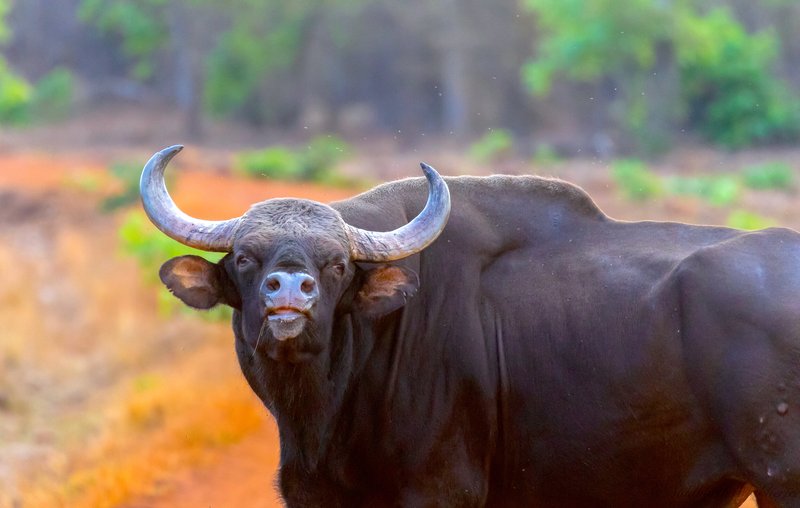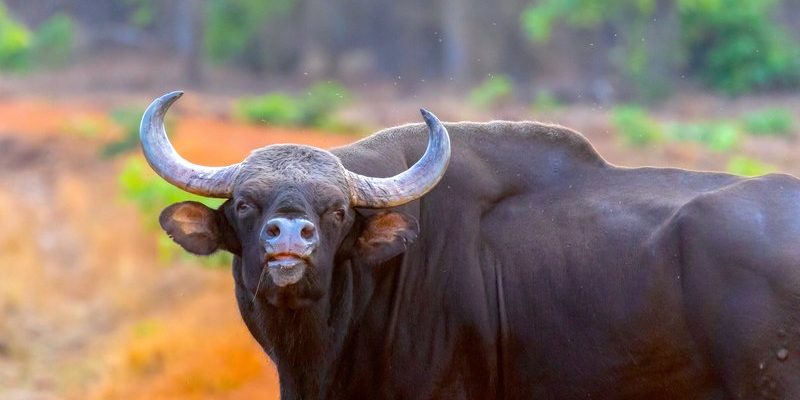
In many cultures, the gaur not only stands as a testament to nature’s splendor but also embodies deeper meanings. You might be wondering how an animal can shape a community’s identity or reflect their beliefs. Let’s dive into that! After all, understanding how different people connect with creatures like the gaur gives us insights not only into their culture but also into our own human experiences.
The Gaur in Indian Mythology
In India, the gaur is often intertwined with mythology and spiritual beliefs. It’s fascinating how stories from ancient texts sometimes paint the gaur as a mystical creature that symbolizes power and protection. For example, in the *Mahabharata*, one of India’s great epics, the gaur is mentioned as a part of the natural world that the warriors respect and protect.
You might be surprised to know that many local tribes view the gaur as a kind of guardian spirit. They believe that spotting a gaur during important life events is an auspicious sign, coming with blessings of strength and vitality. This reverence can lead to ceremonies where the gaur is honored through song, dance, or offerings. It’s as if the animal not only walks through the forest but also through the heart and soul of these communities.
Folktales and Legends Featuring the Gaur
Folktales are a treasure trove of cultural values and beliefs, and the gaur certainly has its share. Many stories speak of the gaur’s formidable presence and how it interacts with humans. One popular tale tells of a hunter who seeks to capture a gaur, believing its hide will bring him fortune. However, he soon learns that the creature is more than just a beast—it’s a protector of the forest, and his actions disturb the delicate balance of nature.
These tales often convey a moral lesson, like respect for nature and understanding one’s place in the ecosystem. The gaur isn’t just an animal; it becomes a character that teaches humans about humility and harmony. Through these narratives, communities express their values, reminding each other of the responsibilities they share with the environment.
Art and Symbolism of the Gaur
Art is another powerful medium through which the gaur is represented. In various cultures, you’ll see the gaur depicted in paintings, sculptures, and textiles, often symbolizing strength, perseverance, and the wild beauty of nature. In tribal art, for instance, you might find vibrant paintings that capture the gaur in motion, showcasing its powerful form and spirit.
These artistic representations serve multiple purposes. They can be a celebration of the gaur’s majesty or a reminder of the bond between humans and the natural world. The use of color and form in these pieces often reflects the artist’s connection to the land and the animal itself. It’s like saying, “We see you, we honor you,” through creativity.
Conservation and Cultural Significance
In recent years, the importance of conservation has been emphasized in many cultures, especially concerning the gaur. As their habitat shrinks, the stories and symbolism tied to these animals become even more significant. Many communities are rallying to protect the gaur, recognizing it not just as a wildlife species but as a cultural icon.
You might find that local festivals or initiatives now include celebrations of the gaur, promoting awareness of its plight. By fostering a sense of pride around the gaur, people unite to protect their heritage and the environment. It’s remarkable how an animal can inspire action, bringing communities together in a shared purpose.
The Gaur in Literature and Poetry
Literary works also echo the significance of the gaur in cultural narratives. Poets and writers might use the gaur as a metaphor for strength or endurance, drawing parallels between the animal’s traits and human experiences. For instance, a poet might depict the gaur’s steadfastness in the face of adversity, paralleling it with a character’s struggles in life.
By incorporating the gaur into their writing, authors honor its place in the ecosystem while highlighting universal themes of resilience and survival. This literary approach not only enriches the text but also deepens our understanding of the relationship between humanity and nature.
Modern Representation and Media
Today, the gaur continues to appear in modern media, from documentaries to wildlife photography, showcasing its beauty and importance in conservation narratives. These representations play a crucial role in educating the public about the challenges faced by the gaur, such as habitat loss and poaching.
Documentaries highlight the gaur’s majestic presence and their role in the ecosystem, allowing people worldwide to appreciate this remarkable animal. Each frame serves as a reminder of the broader message: nature is not just to be admired but also protected.
Moreover, social media platforms have given rise to a new wave of awareness, with stunning images and stories about the gaur reaching a global audience. This modern representation helps bridge cultural gaps, showing how different societies value and protect this incredible animal.
The gaur isn’t just another animal; it’s a thread woven through the fabric of culture, folklore, and human connection to nature. From ancient myths to modern conservation efforts, the story of the gaur is a reminder of the strength and beauty of wildlife—and the responsibilities we have toward it. As we continue to explore these stories, it’s vital to recognize the importance of not only preserving the gaur but also honoring the rich cultural narratives that surround it. The next time you hear about this magnificent creature, remember it’s not just a living being; it’s a powerful symbol of our collective story with the natural world.

